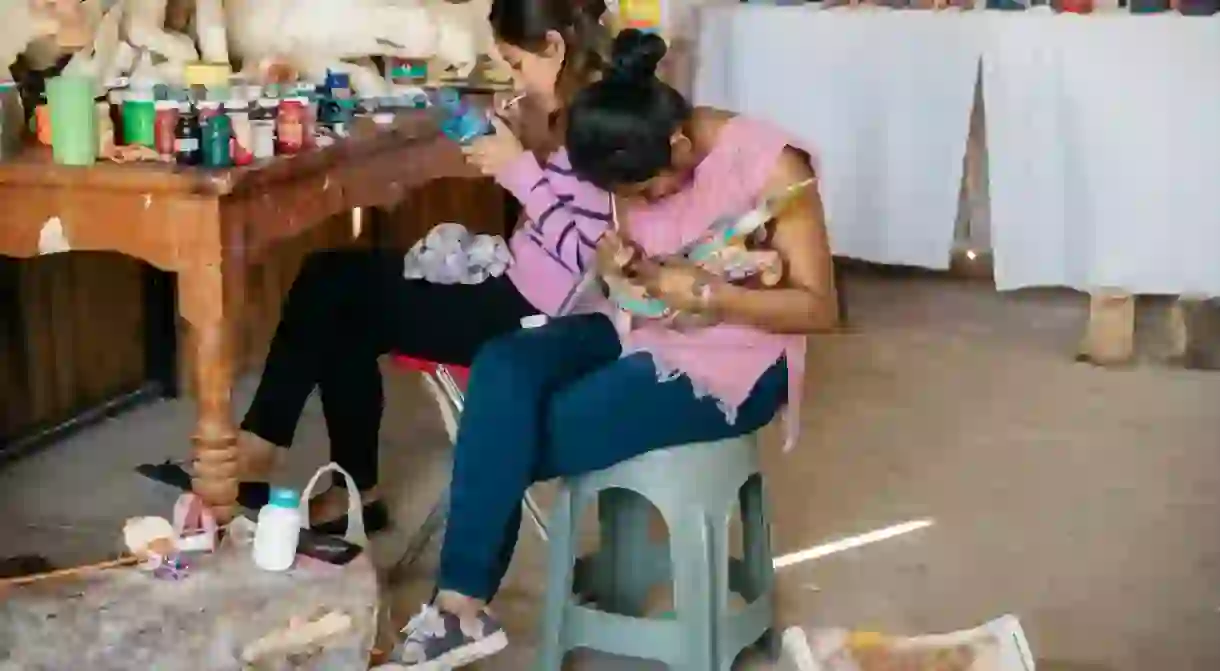What Are Traditional Alebrijes and How Are They Crafted?

Observing the wildly-colored patterns and fantastical forms of Oaxacan alebrije carvings, you might think they were the stuff of dreams, and you would be right. The first alebrijes to be called as such were created by Pedro Linares in Mexico City in the 1930s. A piñata-maker by trade, Linares fell into a delirious sleep while ill and dreamt of a forest of fantastical creatures with mismatched features—each one of them calling out the word alebrijes.
Mexico’s Oaxacan communities have long had a robust tradition of carving, and to their incredible portfolio of real animals were added these dream-like creatures. Dragons with rabbit ears, wolves with antlers; magical, mystical beings seemingly snatched out of someone’s imagination.


The first carver to adapt the paper mache alebrijes to wooden carved alebrijes was the Mexican artist Manuel Jiménez, native of the Oaxacan town Arrazola. Airin Garcia and her family are part of this creative tradition, and sell delicately-painted carvings at their shop in San Marin de Tilcjete, a town now known for their wood craftsmanship.

Garcia learned the alebrije trade from her husband, who grew up in a town with a strong alebrije tradition and was taught the craft by his family. She wasn’t even sure she had a talent for it until one day she picked up a brush and started, as she describes, “daydreaming, doodling”. She was never much interested in art in school and her previous work had been as a waitress.


Most Oaxacan carvings are made from copal wood, a softwood tree that is often as curved and crooked as the mystical creatures that are made from it. The carvings are then brightly painted, most with repetitive dots and geometric shapes that give the pieces a look of depth and texture.
As an artist, Garcia is interested in moving away from the electric-colored paint that is often found on Oaxaca carvings and experimenting with natural dyes made from native plants and insects—like cochineal, a bug that lives and feeds on local cactus and is used to make carmine dye.


She says she is inspired by major Mexican artists like Frida Kahlo, Diego Rivera, and Francisco Toledo, as well as a group of Japanese artists she worked alongside for a period of time. Her colorful designs are the musing of a dreamer at work. “I am trying to express my feelings, my emotions; what I dream and think in daily life.” In addition to creatures large and small they also sell beautifully-decorated molinillos, the traditional utensil for stirring Mexican hot chocolate.


Their most complicated pieces can take days to carve and weeks to paint. It is a painstaking process that takes a lot of patience and a passion for the artwork. Garcia has won local awards for her work and her pieces are in the musuem of Oaxaca. For now they only sell their work in their shop on Crucero street, but one day she hopes they can sell internationally. “One day I want to become recognized as a great artist,” she muses.















